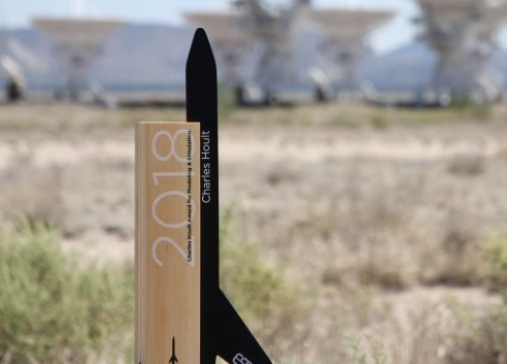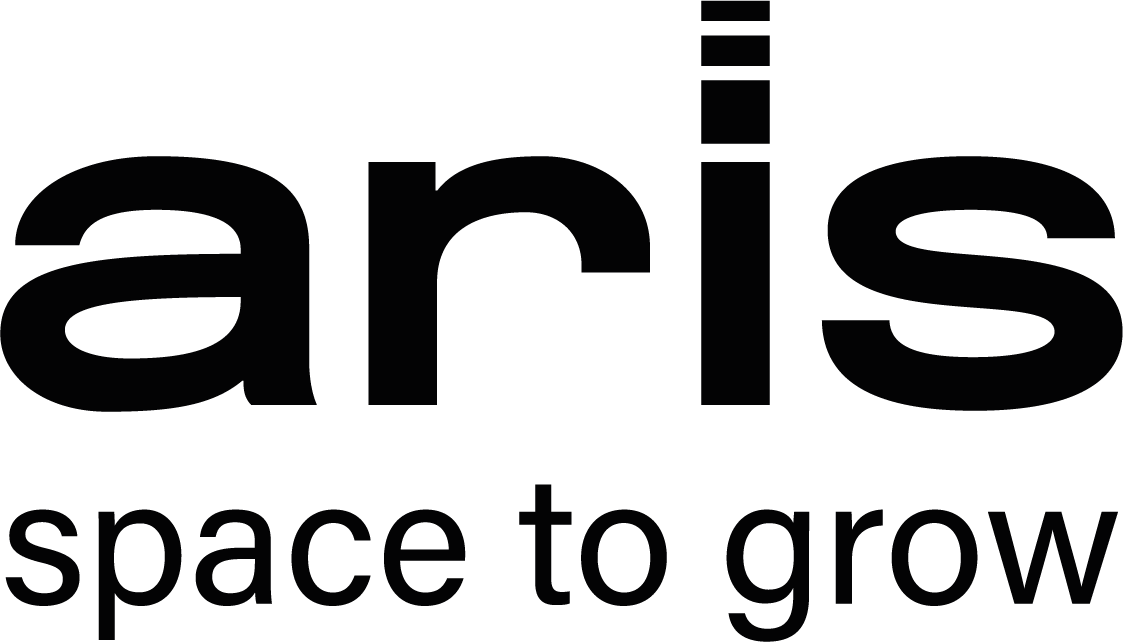
ARIS’ inaugural project
Inspired by Wilhelm Tell’s courage in founding Switzerland, the rocket project TELL aimed to pave the way for students to promote Swiss (space) engineering excellence on a global stage.
It was ARIS first project ever and Kicked-off only two months after the foundation of ARIS. Besides the rocket, the team’s mission was also to discover and establish the framework of the association, its project processes and the partner network.
With the high recognition received at the Spaceport America Cup and the award won, TELL set a clear level of excellence for ARIS.
The sounding rocket TELL Spaceport America Cup 2018
ARIS’ first project consisted of the design, manufacturing, and testing of the first-ever rocket built by the association. The sounding rocket TELL was designed to reach an apogee of 10’000ft at the Spaceport America Cup 2018 with a commercial off-the-shelf solid motor and to be recovered with a dual parachute system. Although the motor caused a catastrophic failure after 1.4s into the flight, TELL won the Charles Hoult Award for Modeling and Simulations.
Over 50 students of ETH Zürich and HSLU contributed voluntarily during 8 months to the project TELL and achieved the extraordinary. With their work, they paved the way for ARIS’ long-term vision and created life-long friendships.
To launch a rocket and to win an Award
At its very first participation at the Spaceport America Cup, ARIS won the Charles Hoult Award for Modeling and Simulations for its technical achievement – one of the ten main awards of the competition. Despite a motor failure and the resulting explosion of the rocket a few seconds into the flight, the project TELL was very well received for its technical and operational excellence.

A statement of technical excellence and teamwork
Team TELL carried the Swiss engineering and organizational excellence to an international platform. Thanks to close interaction and mentoring with partners from industry and academia, the student team managed to build its first own rocket with sophisticated subsystems from almost no experience in rocket science within 8 months.

Switzerland at its best – two teams, two awards
The Spaceport America Cup 2018 was a full success for Switzerland, its high-standard universities and pioneering spirit. Both the EPFL Rocket Team and ARIS won each an award for technical excellence with their inaugural projects:

Team TELL (ARIS): Charles Hoult Award for Modeling and Simulations
Team EIGER (EPFL Rocket Team): Jim Furfaro Award for Technical Excellence

The biggest international university rocket engineering competition – in the desert heat of New Mexico, USA
Team TELL competed at the second edition of the Spaceport America Cup against over 90 university teams from all across the World. Organized by the Experimental Sounding Rocket Association (ESRA) and the Spaceport America, this competition brings together over 1500 of the brightest minds in the blazing heat of New Mexico to present and launch their systems – and learn from each other.
Operations in a harsh environment
The competition takes place in temperatures above 35° in a dusty and tiring surrounding. Preparation, procedures and safety are key.

Learning from established rocketeers
At the cup, ARIS interacts with student teams from renowned universities and experienced judges and aggregates knowledge from the best.

From idea to rocket in 8 months
The full product development process
Within 8 months team TELL set-up the requirements, developed the concept, designed the rocket and its software, manufactured all parts, assembled it, conducted a wind-tunnel test and shipped the rocket to the US. Experts from industry and academia gave feedback at two major half-day reviews: the Preliminary Design Review (PDR) and the Critical Design Review CDR.

Just in time
In the process, many process features such as typical lead times, yet had to be captured. No full system launch was possible before the shipping to the US. Nevertheless, all major subsystem tests were conducted, and the rocket was ready in June 2018 on the launch pad in the desert of New Mexico.


Learning from the experts – the Critical Design Review

Award-winning airbrake system and algorithm
TELL won the technical achievement award named after the US rocket engineer Charles Hoult for the modelling and control of its airbrake module. The algorithm solving a chance-constrained infinite horizon optimal control problem was also presented at the 8th EUCASS conference in Madrid.
The rocket TELL

TELL targets an apogee of 10’000 feet above ground level with a commercial off-the-shelf solid motor. For recovery, a drogue parachute is released by ejecting the nose cone at apogee followed by the main parachute out of the same compartment at 1500 feet above ground level.

As payload, the rocket carried a camera filming biological cells under the extreme launch conditions in a 1.5 CubeSat Unit. The rocket has an altitude control system consisting of three air brakes which are deployed after the motor has burnt out to bring the rocket as precisely as possible to 10’000 feet. Its controller is located on a sensor board with two redundant barometers in the lower body avionics. A WiFi connection links the lower body avionics with the ground communication and the GPS module in the glass fibre nose cone.
Technical data
Lift-off dry weight: 20.5 kg
Length: 2450 mm
Diameter: 150 mm
Motor: Aerotech M2400T, commercial off-the-shelf
Target apogee: 3048 m / 10’000 ft
Static stability margin: 2.3 cal
The Subsystems
Lightweight Structure
The carbon-fiber composite rocket shell with an aluminium interface holds all systems together and ensures structural stability. The nosecone is fabricated from glass-fiber composite to let radio signals from telemetry and GPS pass. Exchangeable CFRP fins with a foam core can be dismounted for transport and replaced if damaged. Couplers and the interface bulkheads have been optimized for the loads and manufactured from aluminium.



Recovery System
Redundant avionics trigger the ejection of the nosecone by pressurizing the parachute compartment with inert CO2. As a result, two parachutes are being ejected after each other: First, a drogue after apogee to stabilize and slow down the descent to less than 32 m/s. At 400 m above ground level, the main parachute is released to reduce the descent rate to less than 9 m/s and provide a safe touch down of the rocket.

Avionics and Telemetry
To provide a live data feed throughout the flight, an X-Bee module transmits the position, system status, velocity, and position to a ground station. A WiFi transfers data within the rocket and the recovery position is acquired by a ublox GPS. The electronic hardware also stores the microcontroller and sensors for the control. All PCBs and the embedded software were student made and adapted for its use in the TELL mission.



Altitude control: airbrake system
Using the aerodynamic characteristics determined with a wind tunnel test, a student-developed algorithm controls the airbrakes that increase the drag to accurately reach the target apogee of 10’000 ft. The algorithm is solving a chance-constrained infinite horizon optimal control problem. Using Monte-Carlo simulations accounting for uncertainty and other effects, a look-up table is stored on the on-board memory and enables a simple implementation on a rocket with limited in-flight computation capabilities.

Propulsion: solid motor
A commercial solid motor composed of Ammonium Perchlorate burns for 3 s and accelerates the rocket to a maximum velocity of 300 m/s with up to 10 g. This burn provides the energy needed to bring the rocket up to 10’000 ft. TELL is built for a reloadable Aerotech M2400T commercial off-the-shelf motor. The launch is initiated by an independent ground-based ignition system using electrical matches.



It is rocket science: explosion after 1.4s
TELL had its maiden flight at the Spaceport America Cup 2018 in New Mexico. On Thursday 21. June 2018 the rocket lifted off… but after 1.4 s the flight the rocket’s commercial motor exploded.
Although shocked, the team did not give up and investigated it with experts and the manufacturer. Conclusion: a non-nominal grain burning. Most probably, team TELL just had bad luck.
Catastrophe at take-off
T – 69 minutes
After flawless preparations TELL was installed on the launch rail at 11:20h. The waiting time on the launchpad exceeded one hour.
T – 0
At 12:29h the ignition was successfully initiated, and the rocket lifted off. TELL cleared the launchpad nominally, but a tilt and/or rotation of the rocket could be observed after leaving the launch rail.
T 1.4 seconds
In the middle of the 3 seconds boost phase, the lower body of the rocket violently disintegrated, and the connection to the rocket was lost. Multiple debris could be observed. A catastrophe at take-off (CATO) was detected, and the range was closed.
The CATO was a great shock for everyone, but team TELL didn’t just take the hit and stayed on the mission. A detailed analysis on the ground with judges, experts of the competition and the manufacturer was conducted the same and following day and concluded a a malfunction of the rocket’s motor due to overpressurization from backside burning. The measured thrust curve suggested a non-nominal burning which was confirmed by the manufacturer. Most probably, just had the statistically possible bad fuel grain batch.

All parts recovered and (almost) intact
The parts of the rocket, including unburnt grain, could be recovered and were subjected to a detailed analysis. The outer structure was almost intact. The inner structure, the payload and the avionics, however, were heavily damaged. Surprisingly, no serious damage could be observed on the motor casing. The distorted lightweight fin section remains as a memorable artefact from the CATO.
Overperformance of the motor
The rocket TELL was equipped with a telemetry system and sensors in all compartments of the rocket. Post-processing of logged and transmitted data showed that the rocket experienced 16 g instead of 11 g in the short burn time until the CATO. This is 33 % more thrust than nominal.
The graph besides shows measurements from the accelerometers in the different sections of the rocket compared to the expected thrust of approximately 2400 N.


Overpressurization from backside burning
The recovered grains, the outside-burnt and burst insulation liner and the observed overperformance suggest that the fuel grain burned faster than nominal, which resulted in backside burning along the wall of the casing.
This created an abnormally high pressure in the motor and the threads of the rear closure of the motor casing weakened, leaving visible abrasion marks on the threads. As a result, the motor disintegrated, released all pressure (explosion) and stopped burning.
The intentional fail-safe mechanism by the failing threads at overpressure prevented further burning and a bigger explosion.
Never give up – the post flight evaluation after the CATO
Check out the videos of project TELL
Spaceport America Cup – Launch
Check out the video of the take-off from multiple angles and see how the rocket looked like after launch!
Spaceport America Cup – Livestream of the launch
Before the launch of the TELL rocket, the project manager tells more about the rocket and the organization.
Spaceport America Cup – House of Switzerland
We proudly represented our country with some raclette and chocolate in the desert of New Mexico.
Spaceport America Cup – Failure Analysis
Here’s a first look at the potential reasons for the break up on the ascent of our rocket during the launch.
Spaceport America Cup – Poster Session
Jonathan Firth (Exec. VP of Spaceport and Program Development of Virgin Galactics) was impressed by our airbrake design.
Spaceport America Cup – Assembly
Before our rocket is inspected by the judges, it needs to get assembled first. Check out the timelapse of the assembly!
Spaceport America Cup – the journey to the USA
We arrived safely in El Paso. We met the vice president of the Experimental Sounding Rocket Association!
Spaceport America Cup – Teaser
Time to explain what the Spaceport America Cup is and how our rocket actually works.
Windtunnel testing at Sauber Aerodynamics
Find out in this video how we prepared for finding aerodynamic parameters of our rocket with the help and know-how from Formula 1 experts of Sauber Aerodynamics in Hinwil, Switzerland.
Making of: the nosecone
The nosecone of TELL 1 is made of glass fiber prepreg. The half-shell mould is closed after the layup and subsequently cured in the autoclave at CMAS Lab of ETH Zürich. Do not feed the students while building rockets!
Full scale recovery test: launch in Val de Ruz
It is the first time the team launches a Tripoli Level Two rocket. The self-built recovery worked perfectly, and the team had a blast in the beautiful Jura region of Switzerland.
The Critical Design Review – feedback requested
With the help of our partners from industry and academia, the team figures out what the best final design of the rocket will be like. Thank you very much RUAG Space, Sauber Aerodynamics, Maxon Motor, ETH Zürich and HSLU for your education!
Use of 3D-printers for rapid testing
Christian explains to us how additive manufacturing helps to have a good idea of what the final object will actually look like.
Test-rocket for the airbrake mechanism
Passion starts early: ARIS’s first rocket launched in Kaltrbrunn, Switzerland, with ARGOS. The rocket MESTRAL I tested our first electronics of the airbrake mechanism.
The enablers of project TELL





























Social Contact